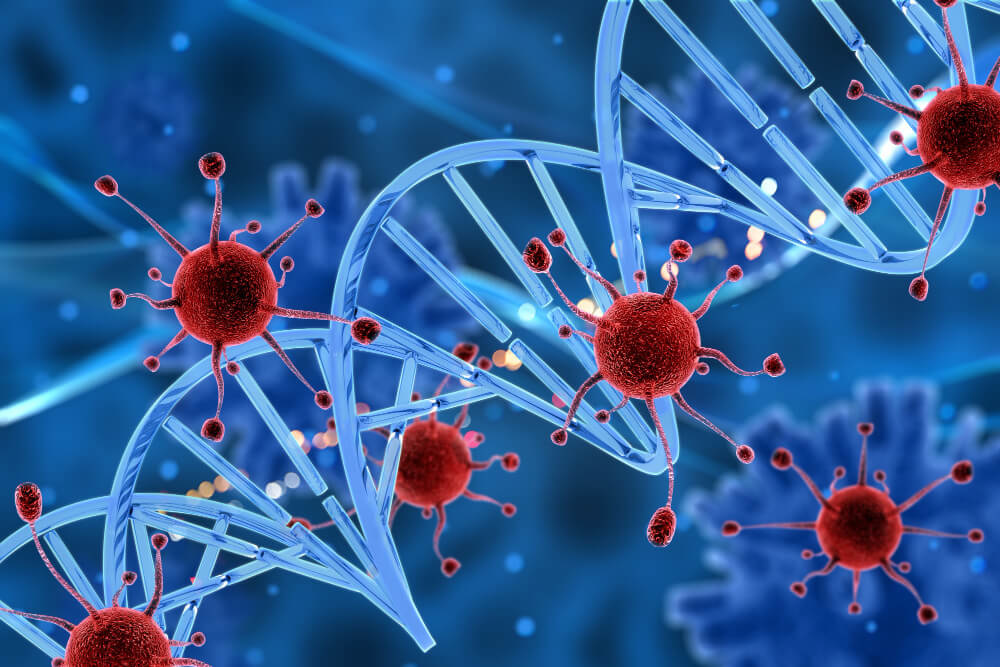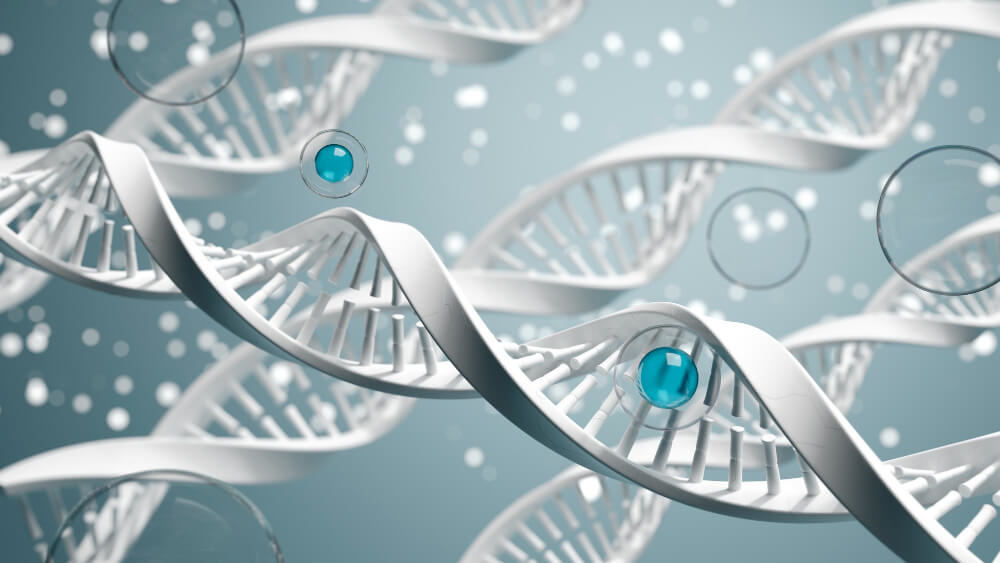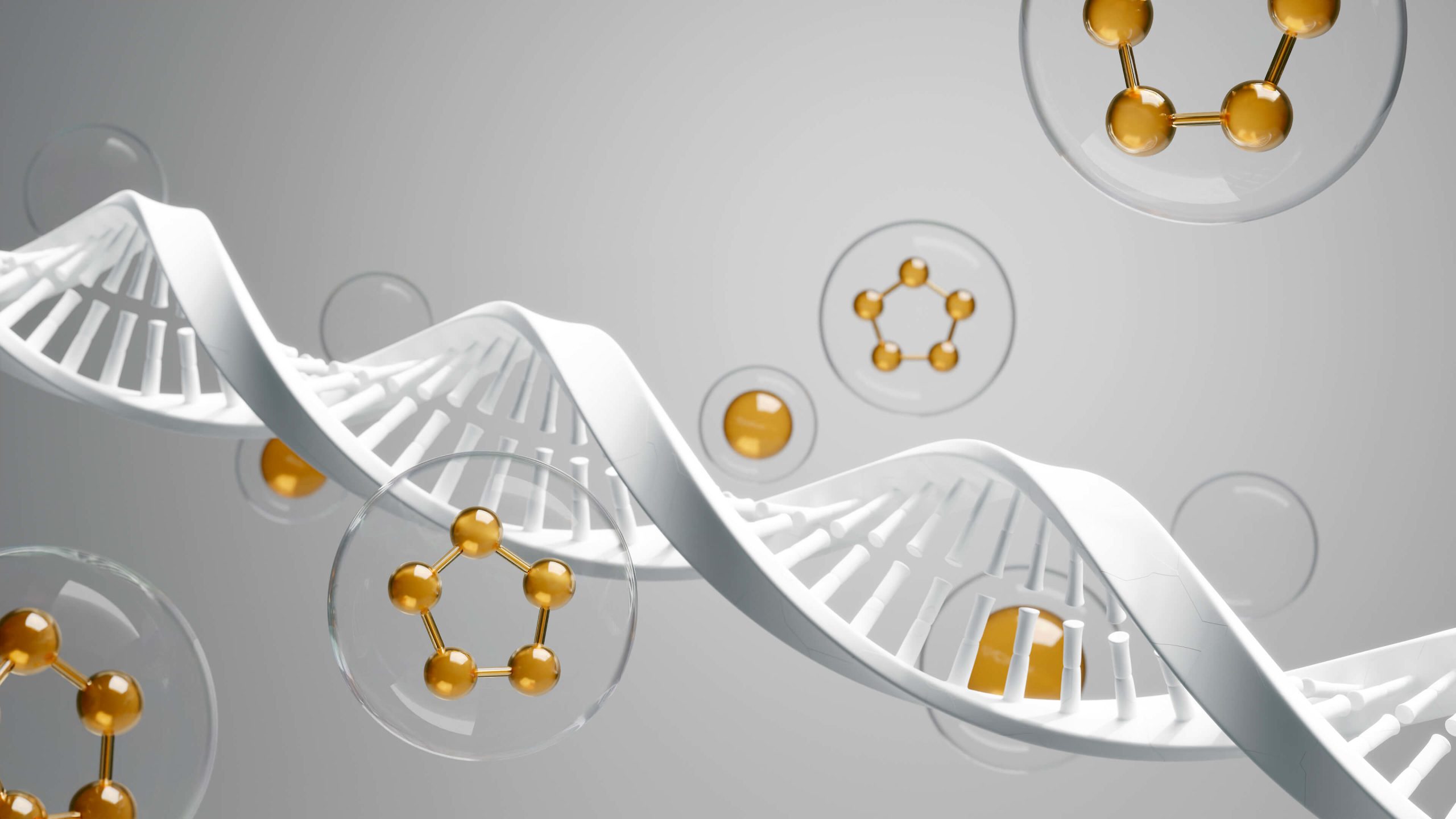The Complete Guide to Gut Health: How Your Microbiome Shapes Your Entire Well-being
Have you ever felt that nagging sense of being ‘off’? Maybe it’s persistent bloating, unexplained fatigue, or a mood you just can’t seem to shake. While we often look for external causes, the root of many of these issues may lie deep within us, specifically within our gut. This complex and bustling internal world is more than just a digestive tube; it’s a critical command center for your entire body’s health and vitality.
Understanding this internal ecosystem is the first step toward transformative wellness. For those looking to truly master this area of wellness, a comprehensive understanding of gut health is absolutely essential. It involves the intricate balance of microorganisms, the integrity of your intestinal lining, and the powerful communication network that links your gut to virtually every other system in your body, including your brain.
Think of your gut as a thriving, complex garden. When tended carefully, it blossoms, providing you with energy, clarity, and resilience. But when neglected, weeds can take over, leading to a cascade of health problems that extend far beyond simple indigestion. Nurturing this garden is one of the most powerful things you can do for your long-term health.

What Exactly Is the Gut Microbiome?
When we talk about gut health, we’re primarily referring to the gut microbiome. This term describes the vast and diverse community of trillions of microorganisms, including bacteria, viruses, fungi, and other microbes, that reside in your gastrointestinal tract. There are more microbial cells in your body than human cells, making you more microbe than human in a way.
This isn’t an invasion; it’s a symbiotic relationship that has evolved over millennia. You provide these microbes with a place to live and food to eat, and in return, they perform a huge number of functions that are vital for your survival. A healthy microbiome is characterized not just by the presence of ‘good’ bacteria, but by its rich diversity.
Imagine a rainforest teeming with thousands of different species of plants and animals, each playing a unique role. A diverse microbiome functions similarly, with different microbial species contributing specialized skills. This diversity builds resilience, ensuring that if one population of bacteria is diminished, others can step in to maintain the overall health of the ecosystem.

Why Is a Healthy Gut So Important for Overall Health?
The influence of your gut extends far beyond processing the food you eat. Its health is foundational to your body’s overall function, acting as a central hub that communicates with and impacts numerous other systems. The old saying ‘you are what you eat’ is only partially true; you are what you absorb, and that process is managed entirely by your gut.
One of its most critical roles is in immunity. A staggering 70 to 80 percent of your immune cells are located in your gut. The gut microbiome helps train your immune system from birth, teaching it to distinguish between friendly microbes and harmful invaders. A balanced microbiome helps maintain a calm, appropriate immune response, while an imbalanced one can contribute to chronic inflammation and even autoimmune conditions.
Then there’s the profound gut-brain axis, a constant, two-way communication highway between your digestive tract and your central nervous system. Your gut produces a significant amount of neurotransmitters, including serotonin, often called the ‘feel-good’ chemical. This connection explains why your emotional state can affect your digestion, and conversely, why an unhealthy gut can contribute to mood swings, anxiety, and brain fog. For a deeper look into this connection, experts explain what is gut health and why is it important in great detail.
Beyond immunity and mood, a healthy gut is essential for absorbing nutrients from your food, synthesizing essential vitamins like B vitamins and vitamin K, and even regulating your metabolism. It’s a cornerstone of energy, vitality, and long-term wellness.

What Are the Signs of an Unhealthy Gut?
Because the gut is so central to overall health, the signs of an imbalance can be surprisingly varied and may not always seem related to digestion. While some symptoms are obvious, others are more subtle and can be easily overlooked or attributed to other causes.
Obvious digestive distress is a primary indicator. This includes frequent gas, bloating, heartburn, constipation, or diarrhea. While everyone experiences these occasionally, their persistent presence suggests that your gut’s ecosystem is struggling to maintain balance. These symptoms are your body’s most direct way of signaling a problem in the digestive tract.
However, the signals don’t stop there. Unexplained fatigue is a common sign, as an unhealthy gut struggles to absorb nutrients and may be burdened by low-grade inflammation, both of which can drain your energy. Skin issues like eczema, acne, or rosacea can also be linked to gut health through the ‘gut-skin axis’, where gut inflammation manifests on your skin’s surface.
Other non-digestive signs include intense sugar cravings, which can be driven by an overgrowth of yeast or sugar-feeding bacteria. Unintentional weight changes, frequent illnesses due to a compromised immune system, and persistent brain fog or difficulty concentrating are also red flags. If you experience ongoing symptoms, the GI Patient Center provides valuable resources for understanding and addressing gastrointestinal conditions.

What Is Gut Dysbiosis?
Gut dysbiosis is the clinical term for an imbalanced gut microbiome. It’s a state where the delicate equilibrium between beneficial and potentially harmful microorganisms is disrupted. This isn’t just about having too many ‘bad’ bacteria; it can also mean not having enough ‘good’ bacteria or lacking overall microbial diversity.
Several factors can trigger dysbiosis. A diet high in processed foods, sugar, and unhealthy fats can feed pathogenic microbes, allowing them to outcompete the beneficial ones. A course of antibiotics, while often medically necessary, can act like a bomb in the gut, wiping out both good and bad bacteria and leaving the ecosystem vulnerable.
Chronic stress, poor sleep, and excessive alcohol consumption are also major contributors to this imbalance. Over time, dysbiosis can lead to a host of problems. It can impair nutrient absorption, compromise the gut barrier, and trigger chronic, low-grade inflammation throughout the body, which is a known driver of many chronic diseases.
Recognizing and addressing dysbiosis is a key focus in modern medicine, with many practitioners seeking advanced training to better serve their patients. The growing demand for expertise is why specialized CME courses on the microbiome and dysbiosis are becoming crucial for healthcare professionals who want to stay at the forefront of functional medicine.

Could Leaky Gut Be the Problem?
Leaky gut, or increased intestinal permeability, is a condition closely linked to dysbiosis. Your intestinal lining is a remarkable barrier, made up of a single layer of cells held together by tight junctions. These junctions are designed to act as gatekeepers, allowing water and properly digested nutrients to pass into your bloodstream while blocking undigested food particles, toxins, and microbes.
In a leaky gut scenario, these tight junctions become loose or damaged. This allows unwanted substances to ‘leak’ from the intestine into the bloodstream. The immune system, not recognizing these substances, identifies them as foreign invaders and mounts an attack. This triggers a systemic inflammatory response that can affect any part of the body.
This chronic inflammation is thought to be a contributing factor in a wide range of conditions, from food sensitivities and allergies to autoimmune diseases like Hashimoto’s thyroiditis, rheumatoid arthritis, and celiac disease. Symptoms can be diverse, including joint pain, skin rashes, fatigue, and cognitive issues.
For those with persistent, unexplained symptoms, a healthcare provider might consider advanced diagnostic tools. Learning when to test for zonulin and lipopolysaccharides LPS can provide crucial insights into intestinal permeability and bacterial toxin exposure, helping to pinpoint the root cause of systemic inflammation.

What Is SIBO and How Is It Different?
While often discussed alongside dysbiosis, Small Intestinal Bacterial Overgrowth (SIBO) is a distinct condition. SIBO is not necessarily about an imbalance of good versus bad bacteria, but rather an overgrowth of bacteria in the wrong location: the small intestine. The vast majority of your gut bacteria should reside in the large intestine (the colon).
When bacteria colonize the small intestine in large numbers, they interfere with normal digestion and absorption. They ferment carbohydrates prematurely, producing large amounts of hydrogen and methane gas. This leads to the hallmark symptom of SIBO: significant bloating and discomfort that often occurs very quickly after eating, particularly after consuming carbs or fiber.
Other symptoms can overlap with general dysbiosis, such as diarrhea or constipation, abdominal pain, and nutrient deficiencies, especially of iron and B12. Diagnosing SIBO typically involves a breath test that measures the gases produced by the bacteria. Treatment is complex and often requires a multi-faceted approach involving specific antimicrobial agents, dietary changes, and strategies to improve gut motility.
Given its complexity, managing SIBO requires specialized knowledge. Clinicians often refer to established guidelines and research to create effective patient plans, and understanding evidence-based SIBO treatment protocols for clinicians is vital for achieving successful outcomes and preventing recurrence.

How Can I Improve My Gut Health Through Diet?
Diet is arguably the most powerful tool you have for shaping your gut microbiome. The food you eat directly feeds the trillions of microbes living in your gut, and making conscious choices can shift the balance in favor of beneficial bacteria, strengthening your gut barrier and reducing inflammation.

What Are the Best Foods for a Healthy Gut?
To build a thriving inner garden, focus on variety and whole foods. The single most important nutrient for your microbiome is fiber. Different types of fiber feed different types of bacteria, so eating a wide range is crucial. Aim to incorporate foods rich in both soluble fiber (oats, apples, beans, carrots) and insoluble fiber (whole grains, nuts, cauliflower, green beans).
Prebiotic foods are a special class of fiber that act as a dedicated fertilizer for your good gut bugs. They pass through the small intestine undigested and are fermented by bacteria in the large intestine. Excellent sources of prebiotics include garlic, onions, leeks, asparagus, Jerusalem artichokes, and slightly unripe bananas.
Probiotic foods contain live beneficial bacteria that can help populate your gut. Fermented foods are the best natural source. Look for yogurt and kefir with live active cultures, sauerkraut, kimchi, miso, and kombucha. These foods introduce beneficial microbes directly into your digestive system.
Finally, don’t forget polyphenols. These are antioxidant compounds found in plants that give them their vibrant colors. They have a prebiotic-like effect and can help reduce inflammation. Load up on berries, dark chocolate, green tea, olive oil, and colorful vegetables.

What Foods Should I Avoid for Better Gut Health?
Just as some foods nurture your microbiome, others can harm it. A diet high in ultra-processed foods is one of the biggest culprits. These foods are typically loaded with sugar, unhealthy fats, salt, and artificial additives that can promote the growth of pathogenic bacteria and increase inflammation.
Excessive sugar is particularly damaging, as it directly feeds yeast and harmful bacteria, leading to dysbiosis. Be mindful of hidden sugars in sauces, dressings, and packaged snacks. Artificial sweeteners, once thought to be a healthy alternative, have been shown in some studies to negatively alter the composition and function of the gut microbiome.
Limiting fried foods, trans fats, and excessive red meat can also be beneficial. The goal isn’t perfection or total restriction, but rather shifting the balance of your diet. Focus on crowding out the harmful foods by adding more of the beneficial, fiber-rich, and colorful plant foods to your plate.

Do Probiotic and Prebiotic Supplements Actually Work?
With the growing awareness of gut health, the market for probiotic and prebiotic supplements has exploded. These products promise to restore balance and improve digestion, but their effectiveness can vary widely. It’s important to approach them with an informed perspective.
Probiotic supplements can be beneficial in specific circumstances, such as helping to restore the microbiome after a course of antibiotics or managing symptoms of certain conditions like irritable bowel syndrome (IBS). However, not all probiotics are the same. Their effects are strain-specific, meaning a strain that helps with diarrhea may not help with immunity. The dosage, measured in Colony Forming Units (CFUs), also matters.
For a healthy individual, getting probiotics from fermented foods is often sufficient and provides a broader range of beneficial bacteria. If you do consider a supplement, it’s wise to research specific strains for your particular health goal. The National Institutes of Health offers a helpful overview of probiotics what you need to know to make an educated choice.
Prebiotic supplements, which typically contain fibers like inulin or FOS, can also be useful for increasing your fiber intake and feeding beneficial bacteria. However, they can cause gas and bloating in some people, especially those with SIBO. As with probiotics, a food-first approach is usually best. For a global view on their use, the World Gastroenterology Organisation Global Guidelines on probiotics and prebiotics provide evidence-based recommendations for both consumers and clinicians.

What Lifestyle Factors Impact Gut Health?
Your gut health isn’t just a reflection of what you eat; it’s a reflection of your entire lifestyle. Factors like stress, sleep, and exercise play a powerful role in shaping your microbial landscape and the integrity of your gut lining.

How Does Stress Affect the Gut?
Chronic stress is a major enemy of a healthy gut. Through the gut-brain axis, your brain can send stress signals that directly impact your digestive system. The release of stress hormones like cortisol can alter the composition of your microbiome, decrease blood flow to the gut, and increase intestinal permeability or ‘leakiness’.
This explains why you might experience digestive upset when you’re anxious or under pressure. To counteract this, incorporating stress-management techniques into your daily routine is non-negotiable. Practices like meditation, deep breathing exercises, yoga, or simply spending time in nature can help calm your nervous system and, in turn, your gut.

Is Sleep Quality Important for My Microbiome?
Absolutely. Your gut microbes have their own circadian rhythm, just like you do. This rhythm can be disrupted by poor or insufficient sleep, which has been shown to negatively alter the diversity of the microbiome. A less diverse microbiome is a less resilient one.
Prioritizing sleep hygiene is a powerful gut-health strategy. Aim for 7-9 hours of quality sleep per night. Create a relaxing bedtime routine, avoid screens before bed, and ensure your bedroom is dark, cool, and quiet. Consistent sleep and wake times help regulate both your body’s clock and your microbiome’s clock.

What About Exercise and Gut Health?
Regular, moderate exercise is fantastic for your gut. It has been shown to increase microbial diversity, promote the growth of beneficial bacteria, and improve gut transit time, which can help with constipation. Physical activity also helps reduce stress and lower inflammation, both of which benefit the gut.
However, it’s a matter of balance. Overtraining or excessively intense exercise can act as a physical stressor, potentially increasing intestinal permeability and negatively impacting the gut. The key is consistency and moderation. A mix of cardiovascular exercise, strength training, and gentle movement like walking is an ideal combination for a happy gut.

How Can I Create a Sustainable Gut Health Plan?
Improving your gut health is a marathon, not a sprint. The most effective approach is one that is built on small, consistent, and sustainable habits rather than drastic, short-term fixes. The goal is to create a lifestyle that naturally supports a healthy inner ecosystem.
Start by focusing on addition, not just subtraction. Instead of thinking about all the foods you have to eliminate, concentrate on what you can add. Can you add one more vegetable to your dinner? Can you swap a sugary drink for a kombucha? Can you add a 10-minute walk after lunch?
Listen to your body. Gut health is highly individual. A food that works wonders for one person might cause discomfort for another. Pay attention to how you feel after eating certain foods or making certain lifestyle changes. This bio-feedback is your most valuable guide on your journey.
Be patient and compassionate with yourself. It took time for your gut to become imbalanced, and it will take time to nurture it back to health. Celebrate small victories and focus on long-term progress over daily perfection. By embracing these principles, you can build a foundation for vibrant health that lasts a lifetime.
Frequently Asked Questions

How can I naturally increase my body’s production of SCFAs?
The most effective way to increase your body’s production of short-chain fatty acids is by consuming a diet rich in diverse sources of dietary fiber. Specifically, focus on soluble fibers and resistant starches, as these are the preferred fuel for the beneficial bacteria in your colon that produce SCFAs. Foods like oats, barley, legumes, apples, and citrus fruits are excellent sources of soluble fiber, while cooked and cooled potatoes, green bananas, and whole grains provide valuable resistant starch.
To further support SCFA synthesis, you should also incorporate prebiotic-rich foods, which directly feed these beneficial microbes. Onions, garlic, leeks, asparagus, and chicory root are powerful prebiotics that help cultivate a healthy gut environment primed for fermentation. Ensuring a wide variety of plant-based foods in your diet promotes a diverse microbiome, which is crucial as different bacterial species produce different types of SCFAs.

Can increasing fiber intake for SCFA production have any negative side effects?
Yes, while highly beneficial, a rapid and significant increase in dietary fiber can sometimes lead to temporary digestive discomfort. Symptoms such as gas, bloating, and abdominal cramping may occur as your gut microbiome adjusts to the increased availability of fermentable carbohydrates. This is a common reaction and typically signifies that the bacteria are actively fermenting the fiber, which is the desired process for SCFA production.
To minimize these potential side effects, it is crucial to increase your fiber intake gradually over a period of several weeks. This gives your gut bacteria time to adapt and multiply, improving your digestive tolerance. Additionally, be sure to drink plenty of water throughout the day, as adequate hydration helps fiber move smoothly through the digestive tract and can alleviate discomfort.

Besides gut health, what are some other key therapeutic benefits of SCFAs?
Beyond their well-known role in nourishing colon cells, SCFAs exert powerful therapeutic effects throughout the body by influencing the immune system. Once produced in the gut, they can enter the bloodstream and travel to distant tissues, where they help regulate inflammation and modulate immune cell function. This systemic anti-inflammatory action is a key reason why SCFAs are being studied for their potential role in managing chronic inflammatory conditions.
Furthermore, SCFAs are integral to the gut-brain axis, the communication network linking your digestive system and central nervous system. Butyrate, a primary SCFA, can cross the blood-brain barrier and has been shown to have neuroprotective effects, potentially influencing mood and cognitive function. These fatty acids also play a critical role in metabolic health by helping to regulate appetite, improve insulin sensitivity, and influence energy expenditure.
For healthcare professionals, medics, and clinic owners dedicated to leading the charge in this field, mastering the principles of gut health is fundamental. Talking Longevity offers the next step in your professional evolution. Discover the most comprehensive functional medicine training, longevity training, and biohacking certification programs designed specifically for practitioners who want to master regenerative medicine protocols and anti-aging therapies.







